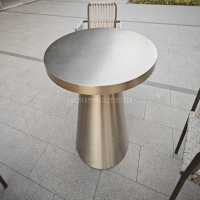Welcome to the website for landscape facilities products and knowledge.
How does the table’s design account for resistance to cracking under heavy loads?
The structural integrity of tables designed for heavy-duty applications depends on a sophisticated combination of material science, geometric engineering, and strategic reinforcement. Unlike conventional furniture, these tables are engineered from the ground up to distribute immense pressure evenly across their entire surface area, thereby preventing the concentration of stress that leads to cracking.
The foundation of this crack resistance begins with material selection. High-strength alloys, engineered composites, or specially treated solid woods are chosen not just for their inherent strength, but for their ductility and fracture toughness. These materials can undergo slight deformation under load without suffering brittle failure. The design often incorporates a monolithic core or a grid-like internal structure that acts as a skeleton, channeling forces downward through reinforced legs or a solid pedestal base.
A critical design element is the treatment of corners and edges, which are common failure points. Instead of sharp 90-degree angles, designers implement radiused corners and bevelled edges. This subtle curvature redirects and disperses stress waves, preventing them from focusing on a single weak point. Furthermore, the table's underside is rarely flat; it typically features a network of ribs, gussets, or corrugations. These elements dramatically increase the moment of inertia—the resistance to bending—without adding significant weight to the top surface.
The connection points between the tabletop and its support system are another focal point of the design. Engineers use dynamic mounting systems that allow for micro-movements, accommodating thermal expansion and slight shifts in load. This prevents the buildup of internal strain that could otherwise cause the tabletop material to crack under prolonged pressure. Finally, advanced manufacturing techniques like rotational molding for plastics or controlled welding for metals ensure a homogeneous structure with no weak seams, creating a unified load-bearing entity that performs predictably under the most demanding conditions.
Related search:

Recommendation
Outdoor Metal Table - Classic Outdoor Furniture, Stainless Steel Table, Durable and Reliable